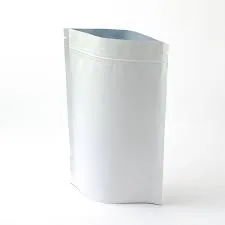- Afrikaans
- Albanian
- Amharic
- Arabic
- Armenian
- Azerbaijani
- Basque
- Belarusian
- Bengali
- Bosnian
- Bulgarian
- Catalan
- Cebuano
- chinese_simplified
- chinese_traditional
- Corsican
- Croatian
- Czech
- Danish
- Dutch
- English
- Esperanto
- Estonian
- Finnish
- French
- Frisian
- Galician
- Georgian
- German
- Greek
- Gujarati
- haitian_creole
- hausa
- hawaiian
- Hebrew
- Hindi
- Miao
- Hungarian
- Icelandic
- igbo
- Indonesian
- irish
- Italian
- Japanese
- Javanese
- Kannada
- kazakh
- Khmer
- Rwandese
- Korean
- Kurdish
- Kyrgyz
- Lao
- Latin
- Latvian
- Lithuanian
- Luxembourgish
- Macedonian
- Malgashi
- Malay
- Malayalam
- Maltese
- Maori
- Marathi
- Mongolian
- Myanmar
- Nepali
- Norwegian
- Norwegian
- Occitan
- Pashto
- Persian
- Polish
- Portuguese
- Punjabi
- Romanian
- Russian
- Samoan
- scottish-gaelic
- Serbian
- Sesotho
- Shona
- Sindhi
- Sinhala
- Slovak
- Slovenian
- Somali
- Spanish
- Sundanese
- Swahili
- Swedish
- Tagalog
- Tajik
- Tamil
- Tatar
- Telugu
- Thai
- Turkish
- Turkmen
- Ukrainian
- Urdu
- Uighur
- Uzbek
- Vietnamese
- Welsh
- Bantu
- Yiddish
- Yoruba
- Zulu
The Process of Manufacturing Corrugated Cardboard Explained Simply
How Is Corrugated Cardboard Made?
Corrugated cardboard is one of the most widely used packaging materials in the world. Thanks to its lightweight, durability, and recyclability, it has become the go-to choice for shipping goods and materials. But have you ever wondered how this incredible material is made? In this article, we will take a closer look at the manufacturing process of corrugated cardboard.
Understanding Corrugated Cardboard
Before diving into the production process, it’s important to understand what corrugated cardboard actually is. Corrugated cardboard consists of three layers an interior medium, a wavy, fluted layer called the flute, and an exterior liner. The flute provides strength and rigidity, while the liners add durability and smoothness to the outer surfaces. This unique structure allows corrugated cardboard to be both lightweight and strong, making it ideal for protecting products during transportation.
The Manufacturing Process
1. Raw Material Preparation
The primary raw materials for making corrugated cardboard are paper and recycled fiber. The process begins with sourcing these materials, which are typically derived from wood pulp. The paper can consist of virgin fibers or recycled paper, which is cleaned and processed to remove impurities. This is an important step, as using recycled materials not only helps reduce waste but also decreases the environmental footprint of the production process.
2. Pulping Process
The next step involves the pulping process, where the raw materials are converted into pulp. This is done by mixing the fibers with water and chemicals, which breaks down the paper into a slurry. The pulp is then refined, screened, and cleansed to ensure that it meets quality standards. The resulting pulp is what will eventually be transformed into the paper sheets used for the corrugated layers.
3. Papermaking
Once the pulp is ready, it is fed into a paper-making machine. In this machine, the pulp is spread onto a moving wire mesh screen to drain the water and form sheets of paper. The wet sheets then pass through a series of rollers that press and dry them, resulting in strong paper that will be used for the liner and medium. This paper is typically produced in large rolls and can be of various grades, depending on the requirements of the end product.
how is corrugated cardboard made

4. Corrugating Process
After the paper sheets are produced, they undergo the corrugating process. This involves passing one of the liner sheets through a heated corrugating machine. The machine shapes the paper into flutes and bonds it to the medium layer using steam and adhesives. This step is crucial, as it gives the cardboard its strength and structural integrity. The combination of the fluted medium and the flat liners creates the characteristic arch-like design that helps distribute weight and absorb shocks.
5. Cutting and Shaping
Once the corrugated board is formed, it is cut into the desired sizes and shapes. Depending on the requirements, it can be produced into various formats such as sheets, boxes, or custom designs for specific products. Cutting machines also score the cardboard, making it easier to fold and assemble into boxes later on.
6. Printing and Finishing
The next phase often involves printing logos, product information, or any other graphics on the corrugated cardboard. This helps in branding and marketing products effectively. Additional finishes, such as coatings or laminations, can also be added to enhance durability or improve aesthetics.
7. Quality Control
Quality control is an essential component of the production process. Operators inspect the finished product for defects, ensuring it meets industry standards for strength, weight, and appearance. This helps manufacturers maintain a high level of quality and consistency in their products.
Conclusion
The process of making corrugated cardboard is a complex yet fascinating journey that transforms raw materials into a versatile packaging solution. From the careful selection of fibers to the intricate steps of pulping, papermaking, corrugating, cutting, and printing, each stage is critical to producing cardboard that meets the diverse needs of consumers and businesses alike. As sustainability becomes increasingly important, the recycling aspect of corrugated cardboard production plays a vital role, contributing to a more eco-friendly approach to packaging. Whether for shipping, storage, or retail display, corrugated cardboard continues to be an essential component in our daily lives.













